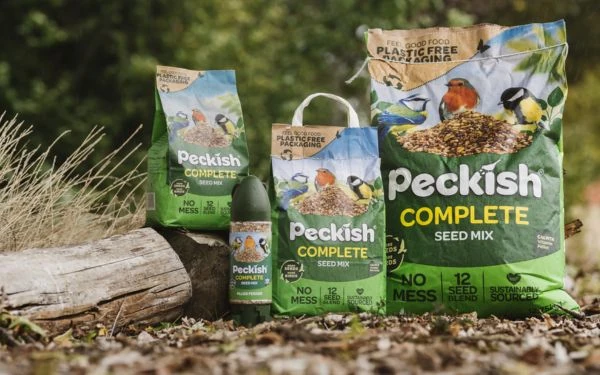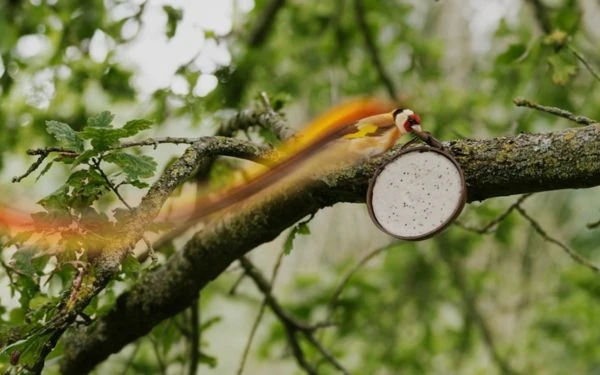
Now that summer has turned into Autumn there’s a notable change in the garden. Autumn is a busy time for many birds as they move to their Winter homes, some of our garden birds move south, while others arrive, seeking the relatively mild sanctuary of the British Isles for their Winter stay. If you enjoy birds in your garden, it’s important to care for them during the Autumn months by keeping them well-fed and watered with a range of quality food offered in feeders and on bird tables to ensure good accessibility for all their needs.
Wild bird food ranges are designed to supplement the natural food available in your garden, so they don’t go without. Birds spend 98% of daylight hours foraging for food and can suffer protein deficiencies if their food becomes unavailable for any reason. Supplementary bird food is essential to their survival.
The Autumn Garden provides a natural larder of berries, fruit, and insects for many birds. In fact, Autumn is a great time to get a variety of plants in the ground to help care for birds. Crab Apples, Rowans, Cotoneasters, Pyracantha, and other fruiting plants provide birds with vital food as well as shelter throughout the colder months.
Using mixed hedging plants as garden boundaries instead of man-made fencing also provides roosting opportunities and gives protection from predators.


Like us, birds need more than just food to survive; water is essential.
Bathing is an important element in keeping feathers in good condition so they can continue to feed and breed successfully.
Wild bird feeds are a dry food source with little moisture in them, so it’s also important that you leave water out for the birds to help them stay hydrated.
In the Winter months, water sources can become frozen, making it difficult for birds to access the water so it’s best practice to break up and remove any ice and replace it with clean, fresh water.
about Coco-Nots® Wild Bird Feeders? They are made from 100% sustainably sourced natural ingredients making them the perfect high-energy treat. The shell is 100% plant-based and has been made with 100% UK harvested waste AND it’s 100% biodegradable after use, simply place it in your compost heap and watch it disappear! It breaks down at the same rate as a banana peel (that’s about 12 weeks). A great alternative to coconut shells. Naturally good both inside and out!
It’s not the most glamorous gardening job, but it is certainly important for the safety of our garden birds! By cleaning your bird feeders you’re helping prevent the spread of harmful diseases. We recommend cleaning them every couple of weeks. (check out this helpful video from our friends at Peckish)
With the nesting season over, Autumn is the perfect time to clean out your bird boxes with a wildlife friendly disinfectant, repair any damage and get them ready for next year’s bird families. Birds will often check out their prospective home way before spring and empty nest boxes can provide shelter from the rain and even help to insulate them from the cold.
Top tips:
Garden Centre
| MONDAY | 09:00 - 17:30 |
| TUESDAY | 09:00 - 17:30 |
| WEDNESDAY | 09:00 - 17:30 |
| THURSDAY | 09:00 - 17:30 |
| FRIDAY | 09:00 - 17:30 |
| SATURDAY | 09:00 - 17:30 |
| SUNDAY | 09:00 - 16:30 |
The Garden Restaurant
| MONDAY | 09:00 - 17:00 |
| TUESDAY | 09:00 - 17:00 |
| WEDNESDAY | 09:00 - 17:00 |
| THURSDAY | 09:00 - 17:00 |
| FRIDAY | 09:00 - 17:00 |
| SATURDAY | 09:00 - 17:00 |
| SUNDAY | 09:00 - 16:30 |
Garden Centre open for browsing only on Sunday until 10:00
Telephone: 01243 756175
Email: customerservice@brickkilngardencentre.co.uk
Bognor Road, Chichester, West Sussex, PO20 1EJ